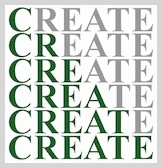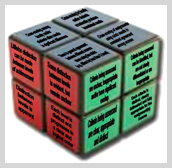Three Roles
28/Feb/2011 09:52 PM

Comments
Final Project
26/Feb/2011 12:42 PM

Rubrics and Assessment
18/Feb/2011 10:22 PM

The common thread that runs through all three articles is that the greatest learning takes place within the confines of shared experiences, collaborating with other people, and learning from each other. It is our job as online instructors to design the best course possible which includes higher reaching goals and objectives, complex thinking activities, self-analysis, and social interaction. We then facilitate students to reach higher levels of learning through coaching, community, and collaboration.
After reviewing the objectives and activities of my final project on Differentiated Instruction in context of the readings, I have included the aims of constructivist learning in my course. However, I realized that I was missing the collaborative piece. I went back to my plan and modified some of the activities to be more interactive and collaborative.
I had a revelation while working on the rubrics for the assessments in my final project. I came to the conclusion that analytical rubrics had the potential to keep students from doing their absolute best and performing with the highest achievement. Many students will “settle” for second best because it is “good enough” for them or they might think it’s too difficult to attain the highest proficiency level. Rick Wormeli in his book, “Fair Isn’t Always Equal: Assessing & Grading in the Differentiated Classroom” supports this idea. To overcome this limitation of analytical rubrics, I created a rubric with three proficiency levels, Exceeds Expectations, Meets Expectation, and Needs Revision. With this system, I could set the criteria very high for the Meets Expectations and reward those who would go above and beyond. At the same time, students who didn’t meet the expectation would have to revise their product until it did. I was assured that every student achieve the objective by meeting the expectation.
While this was an improvement, it still had the potential for students to only meet the expectation. Wormeli presents a different analytical rubric by which only the criteria for a “Standard of Excellence” is specifically spelled out. Students only see the “above and beyond” and work towards it. I’ve decided that I will use this style of rubric for my final project.
DI Pre-course Survey
16/Feb/2011 10:57 PM

Here’s a link to a pre-course survey that I developed for a “Differentiated Instruction” online course. The survey has 10 open-ended questions that are designed to help me know more about the teachers who take the course.
A Trip Down Curriculum Lane
10/Feb/2011 09:37 PM

I can remember a few incidents that dramatically changed who I was as a teacher. One such incidents was a week long class I took in the early 90’s. The class was about developing instructional units for middle school students. We learned how to design units that incorporated Bloom’s Taxonomy with product based learning. It was the first time I had heard the terms “rubric,” “multiple intelligences,” and “learning styles.” The instructor was incorporating current research in gifted education into classroom instruction for all students. I loved the idea of it all and fully embraced the concepts. I started planning and teaching with these ideas immediately. I even used the unit design in my Master’s thesis on integrating different subjects into a middle school science class. In a way, my story reminds me of Dr. Cynthia L. Corritore from Creighton University and how she transformed her teaching.
It has been 13 years since I planned my own instructional units. For the final project of this Assessment class, I started to use the old familiar planning grid I used to develop a unit. On the grid, Bloom’s Taxonomic levels are written across the top and down the first column from simple to complex are the concepts or big ideas of the unit. I posted an example of the planning grid on the discussion board and some of my classmates liked the style. One asked if I owned the copyrights. Of course I don’t, but I thought I should try and find out to give credit to the real author. I couldn’t remember who presented to me way back when, so I searched and found it! I’ve been using the Curry/Samara model for curriculum design. It was like finding an old friend. I did make one mistake though. Instead of the two highest levels of Bloom’s (Synthesize and Evaluate) that I used, Curry & Samara use Creative Thinking and Critical Thinking.
For the final project, I have decided that each module will be a separate big idea. From there, I developed learning objectives and activities. I also took Dr. Khalsa’s suggestion to include a separate assessment field, and my classmate’s suggestion (Thank you, Ellen) to include an analysis of current students. You can view the draft document here.